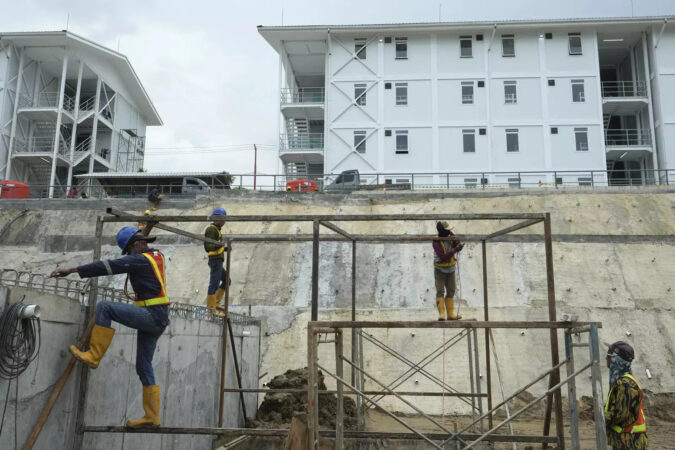Indonesian officials say the new metropolis will be a “sustainable forest city” that puts the environment at the heart of the development and aims to be carbon-neutral by 2045.
But environmentalists warn that the capital will cause massive deforestation, threaten the habitat of endangered species such as orangutans and imperil the homes of Indigenous communities.
While access to the new capital’s site is usually limited, The Associated Press was allowed to tour parts of the site to view construction progress in early March.
Here’s a look at why the capital is moving, the government’s plans and why activists are worried about how it will impact the environment, endangered species and Indigenous communities located near the project site.
WHY IS INDONESIA MOVING ITS CAPITAL?
Jakarta is home to about 10 million people and three times that number in the greater metropolitan area. It has been described as the world’s most rapidly sinking city, and at the current rate, it is estimated that one-third of the city could be submerged by 2050. The main cause is uncontrolled ground water extraction, but it has been exacerbated by the rising Java Sea due to climate change.
Its air and groundwater are heavily polluted, it floods regularly and its streets are so clogged that it’s estimated congestion costs the economy $4.5 billion a year.
President Joko Widodo envisions the construction of a new capital as a nostrum for the problems plaguing Jakarta, reducing its population while allowing the country to start fresh with a “sustainable city.”
WHAT WILL THE NEW CAPITAL BE LIKE?
Widodo’s plan to establish the city of Nusantara — an old Javanese term meaning “archipelago” — will entail constructing government buildings and housing from scratch. Initial estimates were that over 1.5 million civil servants would be relocated to the city, some 2,000 kilometers (1,240 miles) northeast of Jakarta, though ministries and government agencies are still working to finalize that number.
Bambang Susantono, head of the Nusantara National Capital Authority said that the new capital city will apply the “forest city” concept, with 65% of the area being reforested.
The city is expected to be inaugurated on Aug. 17 next year to coincide with Indonesia’s Independence Day. New capital authorities said that the final stages of the city, however, likely won’t be completed until 2045, marking the nation’s hundredth anniversary.
WHY ARE ENVIRONMENTALISTS CONCERNED?
Skeptics worry, however, about the environmental impact of building a sprawling 256,000-hectare (990-square-mile) city down in Borneo’s East Kalimantan province, which is home to orangutans, leopards and a wide array of other wildlife.
Forest Watch Indonesia, an Indonesian nongovernmental organization that monitors forestry issues, warned in a November 2022 report that most of the forested areas in the new capital are “production forests” meaning permits could be granted for forestry and extractive activities that would lead to further deforestation. Until now there has been no certainty regarding the protection status of the remaining natural forests in the new capital city area, the report said.
Data analysis from AP also showed that the region can expect more days of extreme heat in years to come.
HOW ARE INDIGENOUS COMMUNITIES IMPACTED?
At least five villages with more than 100 Indigenous Balik people are relocating because of the construction, with more villages expected to be uprooted as the building site expands.
The government said the new capital has received support from local community leaders, and has provided compensation to people whose land is being used for the city.
But Sibukdin, an Indigenous leader who like many in the country only uses one name and lives in Sepaku, a ward very close to the construction area, said community members felt compelled to take the money they were offered by the government without knowing how compensation is calculated or if it was fair, he said.
